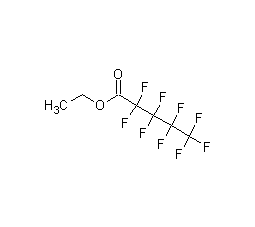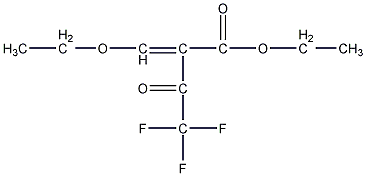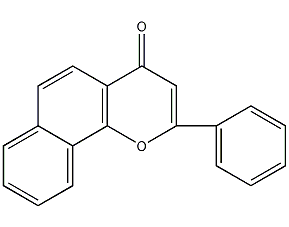

Structural formula
| Business number |
05AW |
| Molecular formula |
BaCO3 |
| Molecular weight |
197.34 |
| label |
Precipitated barium carbonate,
poison heavy stone,
Barium carbonate precipitated,
high purity compounds,
water clarifier,
Magnetic material raw materials and intermediates
|
Numbering system
CAS number:513-77-9
MDL number:MFCD00003448
EINECS number:208-167-3
RTECS number:CQ8600000
BRN number:7045119
PubChem number:24852112
Physical property data
1. Appearance: white orthorhombic crystal or powder [1]
2. Melting point (℃): 811[2]
3. Boiling point (℃): 1300 (decomposition) [3]
4. Relative density (water = 1): 4.43[4]
5. Octanol/water partition coefficient: -1.32[5]
6. Solubility: insoluble in water, insoluble in Sulfuric acid, soluble in dilute hydrochloric acid, nitric acid, ammonium chloride solution, ether, and chloroform. [6]
Toxicological data
1. Acute toxicity[7] LD50: 418mg/kg (oral in rats); 200mg/kg (oral in mice)
2. Irritation No data available
3. Subacute and chronic toxicity[8] Rat inhalation After taking barium carbonate dust for one month, blood pressure increased, the number of red blood cells and white blood cells changed, weight decreased, and reproductive toxicity and embryotoxicity occurred.
Ecological data
1. Ecotoxicity No data available
2. Biodegradability No data available
3 .Non-biodegradability No information available
Molecular structure data
Compute chemical data
1. Reference value for hydrophobic parameter calculation (XlogP): None
2. Number of hydrogen bond donors: 0
3. Number of hydrogen bond acceptors: 3
4. Number of rotatable chemical bonds: 0
5. Number of tautomers: none
6. Topological molecule polar surface area 63.2
7. Number of heavy atoms: 5
8. Surface charge: 0
9. Complexity: 18.8
10. Number of isotope atoms: 0
11. Determine the number of atomic stereocenters: 0
12. Uncertain number of atomic stereocenters: 0
13. Determine the number of chemical bond stereocenters: 0
14. Number of uncertain chemical bond stereocenters: 0
15. Number of covalent bond units: 2
Properties and stability
1. Stability[9] Stable
2. Incompatible substances[10] Strong acid
3. Conditions to avoid contact[11] Humid air
4. Polymerization Hazards[12] Does not polymerize
5. Decomposition products[13] Barium oxide
Storage method
Storage Precautions[14] Store in a cool, ventilated warehouse. Keep away from fire and heat sources. The packaging is sealed. They should be stored separately from acids and food chemicals, and avoid mixed storage. Suitable materials should be available in the storage area to contain spills.
Synthesis method
Preparation method one: Carbonization method: carbon dioxide gas is passed through the barium sulfide solution (for preparation, see barium sulfide) to obtain a barium carbonate slurry that is desulfurized, washed, vacuum filtered, dried at 300°C, and pulverized to obtain the finished product of barium carbonate. . The reaction formula is as follows:
BaS+CO2+H2O→BaCO3↓+H2S↑
The metathesis method involves a metathesis reaction between barium sulfide and ammonium carbonate, and then washing, filtering, drying, etc., to obtain the finished product of bismuth carbonate. . The reaction formula is as follows:
BaS+(NH4)2CO3→BaCO3↓+(NH4)2S
The nepheline conversion method reacts nepheline ore powder with ammonium salt to generate soluble barium salt, and at the same time recovers ammonium carbonate. In use, soluble barium salt is added to ammonium carbonate to precipitate refined barium carbonate, which is filtered and dried to obtain finished barium carbonate. The obtained mother liquor is recovered and recycled.
Preparation method two: carbonization method. Reaction equation:
BaS+CO2→BaCO3↓+H2S↑
Operation method: React 1L aqueous solution containing 180g/L barium sulfide with carbon dioxide at 70°C to generate precipitated barium carbonate. The precipitation is mixed with 10 ml of 25% ammonia water and desulfurized at 60°C for 20 minutes. After filtration and drying, precipitated barium carbonate is obtained, and the product contains 0.46% sulfur.
Metathesis method. Reaction equation:
BaCl2+NH4HCO3+NH4OH→BaCO3↓+2NH4Cl+H2O
Operation method: At 30°C, mix 23.6L aqueous solution containing 56.1g/L ammonium bicarbonate and 1.36L ammonia water in a 50L kettle Mix at 50℃, then add 21.6L of 200.3g/L barium chloride solution dropwise at 50℃ within 2h, and stir at 40℃ for 30min. Filter, dry at 140°C, and pulverize to obtain barium carbonate with an average particle size d of 0.8 μm and a purity of 99.8%.
Poison heavy stone method. Reaction equation:
BaCO3+2NH4Cl→BaCl2+2NH3+H2O+CO2
BaCL2+(NH4)2CO3→BaCO3↓+2NH4Cl
Operation method: 100g of 80% toxic barite powder (120 mesh ) and 60g of ammonium chloride, mix evenly, and quickly put it into a 650°C muffle furnace to react for 3 minutes. After cooling, soak in water, filter, and remove residue to obtain a barium chloride solution. Add 36g of ammonium carbonate to precipitate barium carbonate, filter, dry, and pulverize. The conversion rate is 91%.
Preparation method three: dry granulation. Sieve the heavy precipitated barium carbonate and place it in the raw material bin for full stirring, mixing and degassing. The material passes through the rotary feeder and horizontal and vertical screw conveyor. Enter the roller press to roll the tablets, and the thickness of the tablets is 3.7~4 mm. The material rolled into sheets is fed into the granulator, and the particle size distribution of the semi-finished product is adjusted by adjusting its rotation speed and the size of the sieve plate openings. The semi-finished products use the scraper pulse pneumatic conveying method to feed the semi-finished products to the vibrating screen through the feeder for screening. The particles above 20 mesh are sent back to the granulator, and the particles below 65 mesh are sent back to the raw material warehouse, between 65 mesh and 20 mesh. The granules are transported to the finished product packaging warehouse for packaging, and granular barium carbonate is produced.
In the production process of wet granulated barium carbonate, the water-containing filter cake is filtered and separated by the sedimentation system, and the moisture content of the filter cake is controlled to be about 20%. Under the action of the rotating blades, the materials are quickly mixed evenly, kneaded, and kneaded to form dense particles. The wet particles are put into the direct-fired rotary kiln and sintered at 800 to 1200°C. After granulation, screening, iron removal, metering and packaging, granular barium carbonate is obtained.
Purpose
1. Mainly used for the production of PTC thermal electronic components, manufacturing chip components, semiconductor capacitors, etc.
2. Analyze iron in calcium, magnesium, manganese and zinc, and measure halogen in organic matter. It is used to make barium salts, pigments, fireworks and flares, optical glass, rodenticide, pottery, porcelain, and as fillers and water clarifiers.
3. Used as raw materials in the electronics industry for the preparation of capacitors, PTC electronic components, positive temperature coefficient thermistors, etc.
4. Used as analytical reagents, preparation of fireworks and signal bomb fuels, and auxiliary materials for ceramic coatings and optical glass.
5. Used to treat excess sulfate in chromium plating electrolyte, also used in the white passivation solution of zinc plating layer, and can also be used to treat chromium-containing wastewater.
6. Used as analytical reagents, water purifiers, rodenticides and barium salts. It is also used in the electronics industry, instrumentation and metallurgical industries. [15]











